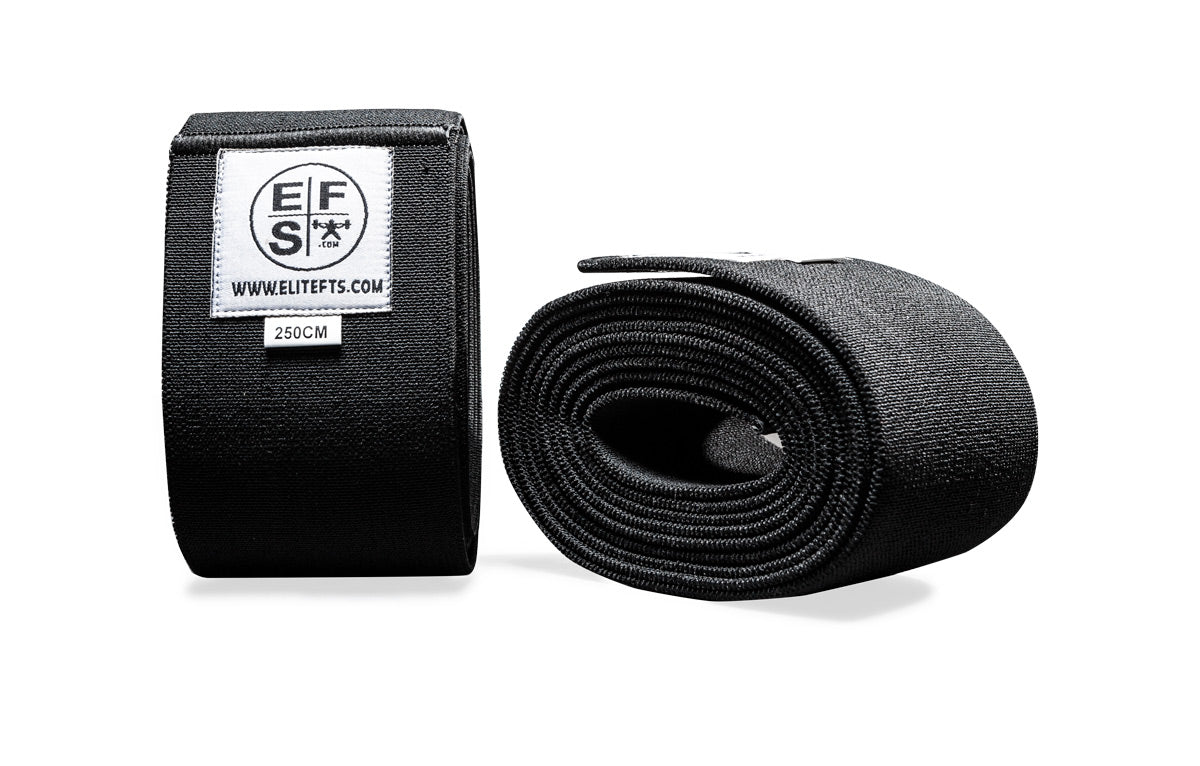Introduction
Part 2 of this series will focus on more common stimulants and supplements—those that everyone has been exposed to in some form or fashion. Many of these are supported by prevailing scientific literature and thus improve exercise and sports performance. In turn, most appear to be safe when ingested for short periods of time by healthy people.Many of these stimulants and supplements claim to enhance performance during training by delivering a sharper mental focus; boosting energy, endurance, and strength; and improving blood flow. However, this makes one question..."What do they actually do, and how do they work? Are there risks and/or benefits?"
So let’s check it out.
What are Stimulants?
As mentioned inPart 1, most of these stimulants and supplements are centered around caffeine, ranging from 100mg (on the low end) to 400mg (on the high end) in one serving. However, many of these are protein/amino acid-based as well, so they serve a different role or purpose. Many of these stimulants and supplements “arouse” the central system, specifically the sympathetic system. Thus, these are often termed “sympathomimetics.” Stimulants are widely used by individuals to promote alertness, reduce fatigue, and to prolong physical work (i.e. training). For part 2 of this series, we are going to take a slightly different approach and discuss more of the protein/amino acid-based products.
Creatine
It’s almost impossible to be involved in this industry, or to even be a layperson, and not know about creatine. There are numerous individuals, however, (even those in the health care industry) who still believe in the misconceptions surrounding creatine. We have all encountered those who have asked if creatine is
“bad,” and many of these people continue to have the same feelings about how too much protein will “harm” your kidneys and cause kidney damage. I guess “too much protein" is also “bad,” right? Well, they might want to actually look at the science! We all know creatine is awesome, but here’s a brief overview.
Creatine is synthesized from the amino acids arginine, glycine, and methionine in the human liver and pancreas (Wyss & Kaddurah-Daouk, 2000). In an average adult (weighing 154 pounds), the total amount of existing creatine is 120 grams, most of which (95%) is comprised in skeletal muscle. It is estimated that 65% of intracellular creatine is phosphorylated (i.e. phosphocreatine), and the remainder exists as free creatine. But I’ll spare you the remainder of all the physiology stuff. In case you may not know, especially for you strength and power athletes, creatine is recognized as the gold standard in the supplement industry, and it is frequently compared as such to other sports supplements. According to the ISSN position stand (2007), creatine monohydrate is the most effective ergogenic nutritional supplement currently available to athletes for increasing high-intensity exercise performance and lean body mass during training. Today, several hundred peer-reviewed research studies exist that have examined the effectiveness of creatine supplementation. According to Kreider, (2003), of those studies nearly 70% have reported a significant improvement in exercise performance. While, it is safe to say that the remaining 30% of those studies did not show any benefit, research reports that this is likely due to the lack of an increase in skeletal muscle creatine content (Greenhaff 1994, Buford 2007).
Most individuals are aware that many different forms of creatine exist, including creatine monohydrate, creatine anhydrous, creatine phosphate, effervescent creatine, creatine ethyl ester, serum creatine, and magnesium creatine (Greenwood 2003, Kreider 2003, Selsby 2004, Falk 2003). Taking into account current scientific literature and research studies, however, these forms of creatine appear to offer no additional benefit compared to traditional creatine monohydrate in terms of increasing strength or improving performance. The normal loading phase for creatine consists of ingesting 20 grams of creatine in four equal doses each day (for five days), followed by a maintenance dose of two to five grams a day for several weeks to several months. This specific approach to dosing results in an increased saturation of intramuscular creatine.
Short-term studies have shown improvements by using creatine. Such improvements include greater cycling power and total work completed for the bench press and jump squat (Buford 2007, Tarnolpolsky 2000, Preen 2001, Volek 1997). More recent reports even show more long-term improvements when combining creatine supplementation with training. Such improvements include increased muscle creatine and PCr concentrations and increased lean body mass, strength, sprint performance, power, rate of force development, and muscle diameter (Volek, 1999, Buforrd 2007, Kreider 1998). The primary mechanism to increase muscle mass is due to an enhanced ability to perform high-intensity exercise from increased PCr availability and greater ATP synthesis. This results in maximizing and creating a greater training stimulus and promoting greater muscular hypertrophy. Further, studies have reported that creatine supplementation improved performances in strength-power athletes in football (Wilder 2002), ice hockey (Jones 1999), and squash (Romer 2001). Therefore, considering the large quantity of scientific evidence and positive performance markers associated with creatine, there’s no question that it is the most effective sport supplement available today for strength-power athletes.
Beta-Alanine
Compared to other sports supplements, Beta-alanine has the fewest performance and clinical studies demonstrating its effectiveness. Since it’s recently been introduced, the majority of studies have occurred within the last five years (Hill 2007, Hoffman, 2006, Hoffman 2008, Zoeller 2007, Stout 2006, 2007, 2008). The main rationale to supplementing with beta-alanine is to increase intramuscular concentrations of carnosine. Specifically, it has been shown that 28 days of beta-alanine supplementation at a dosage of 4 to 6.4 grams per day increases intramuscular carnosine levels by approximately 60% (Hill 2007). Compared to creatine, where muscles can maximize storage capacity in seven days, the upper limit to carnosine is currently not known. (Although it does return to baseline within nine weeks after consuming less than five grams a day over six weeks.Carnosine is highly prevalent in skeletal muscle—primarily fast twitch muscle fibers. During exercise, certain metabolites accumulate that cause fatigue (i.e. hydrogen ions). So, as hydrogen ions increase, pH drops and reduces muscle function and power output. Carnosine actually helps buffer hydrogen ions. Compared to creatine, however, beta-alanine does not seem to improve

maximal strength (Hoffman 2006, Artoli 2010, Kendrick 2008, Hoffman 2008). Still, although aerobic power is not improved, there is some data supporting that anaerobic threshold is improved with beta-alanine supplementation (Stout 2008, Zoeller 2007).
Beta-alanine helps to enhance performance under three conditions:
- Single bouts of very high intensity exercise of at least 60 seconds in duration.
- Multiple bouts of very high intensity training with short rest periods.
- Single bouts of very high intensity training in the presence of fatigue.
Within the published studies, beta-alanine ingestion has ranged from 2.4 to 6.4 grams per day (Hill 2007, Hoffman 2008, Stout 2008, Kendrick 2008). However, in numerous studies, the total daily amount of beta-alanine consumed was divided into two to four smaller doses, with the most common being two to four equal doses of approximately 1.6 or 3.2 grams per dose, supplying approximately 3.2 or 6.4 grams per day (Stout 2006, Stout 2007, Zoeller 2007). This is in order to try and prevent the only known side-effect of beta-alanine supplementation—the symptom of paresthesia. Paresthesiais a prickly sensation mainly limited to the face and hands. Available reports indicate that symptoms of paresthesis are produced with both a high- and short-term single dose and dissipate within approximately one hour after ingestion (Harris 2006, Artioli 2010).
In a classic study by Hoffman et al. (2008), college football players ingested 4.5 grams of beta-alanine or a placebo in a randomized, double-blind fashion for 30 days. Beta-alanine supplementation began three weeks before pre-season football training camp, and it continued for an additional nine days during training camp. Anaerobic performance measures included a 60-second Wingate test and three line drills (200-yard shuttle runs with a two-minute rest between sprints) assessed on Day One of training camp. Training logs (documenting resistance training volumes) and questionnaires on subjective feelings of soreness, fatigue, and practice intensity were also assessed. At the end of the 30-day investigative period, there was an observed lower fatigue rate in those subjects ingesting beta-alanine during the Wingate anaerobic power test. Greater training volumes were also reported in the bench press exercise and for all resistance training sessions in the beta-alanine group. Furthermore, subjective feelings of fatigue were also lower for the beta-alanine group vs. the placebo group. Based on this study, it seems that 30 days of beta-alanine ingestion did not significantly improve anaerobic performance, but it did have a greater effect on training volumes and lower feelings of fatigue.
Bottom Line: Based on the science, beta-alanine does and can have numerous performance benefits that can positively impact a wide variety of sports including wrestling, soccer, field hockey, ice hockey, cycling, basketball, boxing, mixed-martial arts, and even specific events for swimming and track and field.
HMB
HMB (b-Hydroxy-b-methylbutyrate) is a metabolite from the amino acid leucine and is often associated with anti-catabolic activity. HMB helps to inhibit protein breakdown, which is often observed as a natural physiologic process after high intensity training (Wilborn 2011). Due to HMB’s potential anti-catabolic activities, it has the ability to preserve or minimize the loss of muscle tissue.Many have speculated the possibility that, considering HMB’s anti-catabolic activity, HMB can lead to gains in lean body mass. Unfortunately, available scientific studies on this topic are unclear. A previous report by Nissen et al. (1996) used untrained male subjects who ingested three grams of HMB or a placebo for seven weeks in conjunction with resistance training six days per

week. Fat-free mass increased in the HMB-supplemented group at various times throughout the investigative period...but not at the conclusion of the seven-week trial. Other studies that used similar training programs and doses of HMB (three grams per day) have demonstrated that HMB ingestion increases lean body mass (Jowko 2001,Gallagher 2000). Yet, despite these inconclusive studies, HMB supplementation has consistently shown to enhance strength in previously untrained people when combined with a resistance training program (Jowko 2001, Panton 2000, Nissen (1996). In one study, which featured highly-trained individuals, HMB supplementation was shown to enhance strength when combined with a resistance training program (Thompson 2009). However, many others have not (Kreider 1999, O’Connor 2007, Slater 2001, Ransone 2003).
The majority of the studies investigating exercise performance, anti-catabolic potential, body composition, and lean body mass changes have used three to six grams per day of ingestion. Three grams per day (often used in several doses) is the most common dosage used. Taking these findings of HMB into account, it appears that HMB may be beneficial (in terms of increasing lean body mass and strength) for untrained individuals or those starting a new resistance training program. Yet, it does not appear to be useful for athletes who regularly engage in resistance training, or even for those who are highly trained.













































































































